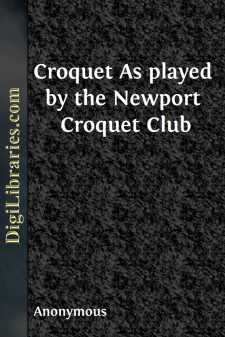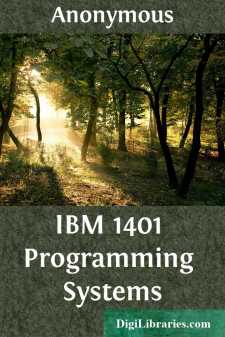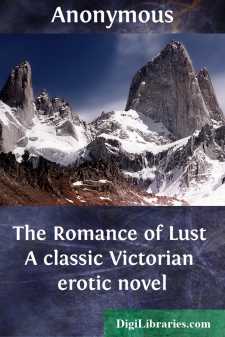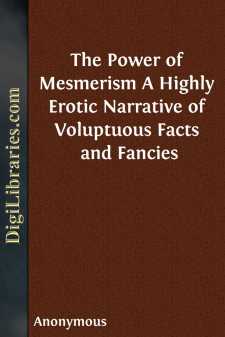Categories
- Antiques & Collectibles 13
- Architecture 36
- Art 48
- Bibles 22
- Biography & Autobiography 813
- Body, Mind & Spirit 142
- Business & Economics 28
- Children's Books 17
- Children's Fiction 14
- Computers 4
- Cooking 94
- Crafts & Hobbies 4
- Drama 346
- Education 46
- Family & Relationships 57
- Fiction 11829
- Games 19
- Gardening 17
- Health & Fitness 34
- History 1377
- House & Home 1
- Humor 147
- Juvenile Fiction 1873
- Juvenile Nonfiction 202
- Language Arts & Disciplines 88
- Law 16
- Literary Collections 686
- Literary Criticism 179
- Mathematics 13
- Medical 41
- Music 40
- Nature 179
- Non-Classifiable 1768
- Performing Arts 7
- Periodicals 1453
- Philosophy 64
- Photography 2
- Poetry 896
- Political Science 203
- Psychology 42
- Reference 154
- Religion 513
- Science 126
- Self-Help 84
- Social Science 81
- Sports & Recreation 34
- Study Aids 3
- Technology & Engineering 59
- Transportation 23
- Travel 463
- True Crime 29
Croquet As played by the Newport Croquet Club
by: Anonymous
Description:
Excerpt
CHAPTER I
DEFINITIONS
Arena.—The space included by the boundaries of the croquet ground, within which a ball driven out of it is entitled to be placed.
Blow.—The stroke of the mallet. A blow opposed to a push.
Booby.—A ball that fails to run the first bridge.
Bridged Ball.—A ball that has run the first bridge.
Central Bridges.—Those in a line between the stakes.
Chiefs.—The leaders of the sides, who strike for the first choice.
Concussion.—The displacement of a ball by another ball.
Croquet.—The title of the game. A privilege gained by making "roquet." It consists in placing the playing ball in contact with the roqueted ball, and on any side of it; holding it there with the foot, and striking it with the mallet, by which means the other is driven in any required direction.
Croqueterie.—The implements of the game—namely, balls, mallets, stakes and bridges.
Dead Ball.—A rover struck against the starting stake, and thereby struck out of the game.
Double Point.—Two points made on the same blow.
Enemy.—A player on the opposite side.
Flank Bridges.—Those on the right and left of a line between the stakes.
Flinch.—When in executing the "croquet" the playing ball escapes from under the foot, it is said to "flinch."
Front of a Bridge.—That side from which a ball must proceed in running it; the side toward the starting stake for the first half round; the side towards the turning stake for the last half round.
Friends.—Players on the same side.
Grand Round.—The grand round consists in running all the bridges, (the central ones in both directions,) and tolling the turning stake, in proper order; after completing which the ball becomes a rover.
Half Round.—The first half round includes running the central bridges and those on the left flank, and is to be made before tolling the stake; the second half round includes the central bridges and those on the left flank which are to be run in the reverse order between tolling and striking out.
Misplay.—Playing out of proper tour; playing the ball of another player, or continuing the tour after failing to make a point.
Oblique Bridge.—A bridge accidentally out of perpendicular, either to the horizon or to the line joining the stakes.
Overrunning a Bridge.—A ball overruns its proper bridge when, in attempting to run it, it passes it on one side.
Placing a Ball.—Bringing it within the arena when driven out of it, or removing a ball from a fixed obstacle.
Point.—A blow by which a step on the round or a roquet is made, thereby entitling the player to continuance of tour—that is, to another blow.
Position.—A ball is in position when it is in front of its proper bridge, with a reasonable probability of running it on the next blow. The position is good or bad according to the ease or difficulty of the run.
Proper Bridge.—The next "step on the round," the making of which constitutes a point.
Push.—Shoving the ball with the mallet, allowed on some croquet-grounds instead of a blow.
Re-roquet.—After roquetting a ball to roquet it again during the same tour, a right acquired only by making a step on the round.
Ricochet.—Two or more roquets made on the same blow.
Roquet.—The contact of the playing ball with another ball under such circumstances as to constitute a point; that is, provided both balls are bridged balls at the time of contact, and roquet has not been made on the same ball before in the same tour since the right to re-roquet has been acquired.
Roquet-Croquet; Croquet sans pied.—The privilege of the rover. It differs from croquet in that the playing ball is not held with the foot, so that when struck it follows the croquetted ball or diverges in another direction....












